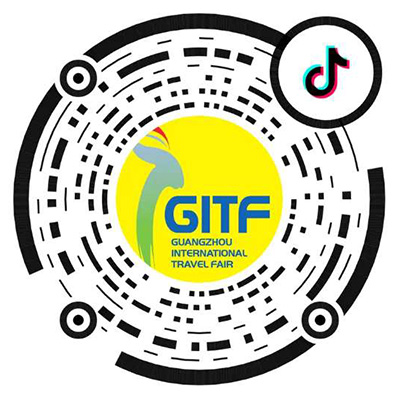
Forum Review丨Accelerating the Mutual Engagement Between China and the World at this Premier International Outbound Tourism Conference
2024-06-26
This year, the mutual engagement between China and the world has been accelerating further. A series of favorable policies and the expansion of international flight routes have continuously promoted the rapid recovery of inbound and outbound tourism in China. As the largest source and destination of international tourists, China's outbound tourism has garnered increasing attention from the global tourism industry.
How will China's outbound tourism develop in 2024? What new opportunities lie ahead? On May 17, the 2024 China Outbound Tourism Conference took place, gathering over a dozen experts and scholars from around the world. They engaged in in-depth discussions around the theme "China’s Outbound Tourism as Part of the New Global Tourism 2.0." This cutting-edge conference aimed to analyze industry trends, predict the future of tourism, and most importantly, highlight the promising future of China's outbound tourism, which was rapidly unfolding through the enthusiastic discussions of the participants.
Keynote Speech
Asia-Pacific Leading the Recovery, Significant Changes in China's Outbound Tourism
The forum began with keynote speeches from prominent figures. Zoritsa Urosevic, Executive Director of UN Tourism, and Noor Ahmad Hamid, CEO of the Pacific Asia Travel Association (PATA), each delivered a welcoming address.
Zoritsa Urosevic sent her greetings to all participants in the China Outbound Tourism Conference via video, representing the UN Tourism. She emphasized that 2027, declared a pivotal year for sustainable development at the UN headquarters in New York in February 2024, would see the UN Tourism lead the development and implementation of international tourism initiatives, with hopes of collaborating with China.
In his video message, Noor Ahmad Hamid highlighted that 2024 was a booming year for tourism, with China's tourism sector playing a significant role. "In 2024, the number of international tourists is expected to reach 619 million, a 24.5% year-on-year increase. By 2025-2026, the recovery rate will be around 90%, with growth rates stabilizing at 13% and 8%, respectively. The number of international tourists will reach between 701 million and 762 million, which is excellent news for the Asia-Pacific region." He revealed that Asia was now leading the recovery, with 564 million tourists projected for 2024, and by 2026, the number of domestic and business travelers in the Asia-Pacific region was expected to exceed 762 million, surpassing 2019 levels by 111%.
Next, Professor Wolfgang Georg Arlt, CEO of China Outbound Tourism Research Institute (COTRI), as the host of this conference, elaborated on this year's conference theme, "China’s Outbound Tourism as Part of the New Global Tourism 2.0." He noted that the global tourism landscape had undergone significant changes: "The world population is aging, and China is no exception. By 2030, 26% of China’s population will be over 60 years old, compared to the global average of 21%. This also means that the economy will undergo new changes and we need to think about how to develop a sustainable economy." He emphasized that we were now in a post-pandemic era, which he termed the era of Global Tourism 2.0, spanning from 2024 to 2050. This era called for a reimagining of tourism and a renewed understanding of its critical impact, considering factors such as climate change, national conflicts, and economic growth challenges that may slow economic progress and affect tourism quality. According to the "2024 China Outbound Tourism Plan" survey, two-thirds of respondents expressed plans for outbound travel, driven by recommendations (25%) and travel agencies (4%). Word-of-mouth and reputation were crucial. Destination-wise, 60% chose Asia, followed by Europe and other regions including South America, Africa, and the rapidly growing Middle East market, with Saudi Arabia becoming an increasingly popular destination.
In his keynote, Professor Wolfgang also mentioned the reasons why Chinese tourists love to travel. The proportion of shopping was declining and has come to the 6th place, more tourists now seek to see local people, savor local cuisine, and engage in local activities. Slow travel and health tourism were emerging trends. Regarding the future of tourism, he mentioned the potential of artificial intelligence: "AI might make our travel experiences more meaningful."
Roundtable Discussion 1
Addressing Climate Change and Integrating Sustainability into Tourism Experiences
During this conference, three roundtable discussions ignited brilliant brainstorming sessions from various perspectives, including climate and sustainable development. Moderated by Timothy Lee from Macau University of Science and Technology, three guests from Nepal—Suresh Singh Budal, CEO of PATA Nepal Chapter; Kundan Mishra, an official from Nepal Tourism Board; and Lakpa Phuti Sherpa, a member of Nepal Executive Committee—shared insights on sustainable tourism in Nepal, a popular destination. They emphasized that Nepal, rich in natural resources and natural beauty and exploratory experiences such as mountain trekking, offered many attractive tourism products.
Suresh Singh Budal
CEO of PATA Nepal Chapter
Suresh Singh Budal highlighted Nepal's efforts in sustainability, noting that 45% of its territory is covered by forests. He also mentioned ongoing initiatives to mitigate the impacts of climate change, which was a significant draw for both Chinese and international tourists.
Kundan Mishra
Officer from Nepal Tourism Board
Kundan Mishra added that the Nepal Tourism Board maintained frequent contact with the Chinese tourism industry, particularly through cultural engagements such as the Dragon Boat Festival in Nepalese cities, which had attracted Chinese tourism professionals: “Cultural similarities help promote sustainable development through shared cultural expressions.”
Lakpa Phuti Sherpa
Member of Nepal Executive Committee
Lakpa Phuti Sherpa pointed out that Chinese tourists enjoyed exploring Nepal's mountains and that an increasing number of Chinese were choosing to live in Nepalese cities, reflecting a sustainable development concept. She hoped for more cultural exchanges and collaboration between the two countries to address climate change jointly.
Roundtable Discussion 2
New Forms of Global Tourism Cooperation are Emerging
At present, global tourism is developing rapidly. How to cooperate and promote tourism to develop faster has become a consensus. For the common vision, strengthening cooperation is imperative. For different tourism organizations, what new forms of cooperation are there in the era of global tourism 2.0?
In the second roundtable discussion, Winfried Karl, CEO of China nach Mass; Richard Matuzevich, Senior Manager of World Tourism Cities Federation (WTCF); and Lucas Peng, CEO of Peak Hospitality Solutions, delved into “New Forms of Tourism Cooperation and Organizations in Global Tourism 2.0.”
This year, many countries have introduced visa facilitation measures for Chinese tourists, and China has also eased visa restrictions for various countries. For industry insiders, this is a new beginning to open up tourism cooperation.
Richard Matuzevich
Senior Manager of WTCF
Richard Matuzevich emphasized that these visa exemptions fostered friendly cultural exchanges and grassroots connections. I believed this trend would continue for five years or even longer. He noted that China remained a crucial and vast tourism market, making relaxed visa requirements essential.
Lucas Peng
CEO of Peak Hospitality Solutions
For hotels, Lucas Peng stressed the importance of enhancing the overall experience for Chinese tourists, and you could not just focus on one type of visitor. We should provide comprehensive support and services for Chinese tourists, focusing on enhancing and optimizing their experience.
The speakers also highlighted the changes in booking behavior, with over half or even 80% of tourists completing bookings online, necessitating attention to platforms like Ctrip, Fliggy, and WeChat.
Roundtable Discussion 3
Medical Tourism as a Future Direction
As the conference progressed, the discussions became more focused. Peter Jeng, Deputy Secretary-General of China-EU Commission, Professor Timothy Lee from Macau University of Science and Technology, and Dr. Zhang Yang discussed the tourism relations between China and EU countries, Macau's tourism characteristics and development, and the promising field of medical tourism.
Peter Jeng
Deputy Secretary-General of China-EU Commission
Peter Jeng pointed out that tourism is becoming increasingly transparent, with five main areas to focus on: health, green buildings, fintech, commodity trading, and services.
Timothy Lee
Professor of Macau University of Science and Technology
Timothy Lee said that China was entering an aging stage and the elderly would become more affluent in the future. They had some psychological needs, including the pursuit of emotional value, etc. Especially based on the promising development of health tourism, the development of medical tourism was also a new direction.
Exclusive Interview
Azerbaijan - Discovering a Vibrant Destination
An exclusive interview during the conference introduced attendees to the colorful world of Azerbaijan. The host's conversation with Florian Sengstschmid, CEO of Azerbaijan Tourism Board, unveiled the mysteries of this fresh destination.
Q: Wolfgang Georg Arlt, CEO of COTRI
A: Florian Sengstschmid, CEO of Azerbaijan Tourism Board
Q: Why did you choose to participate in GITF?
A: GITF extended a strong invitation for us to promote more. Many Cantonese-speaking people in Guangzhou love adventures and discoveries, making this an excellent opportunity for us to showcase Azerbaijan.
Florian Sengstschmid expressed a desire to develop cutting-edge products to meet tourist demands: ”Azerbaijan's uniqueness is not only limited to its climate, including alpine or subtropical climate, but also to the Caspian Sea are its resources - topographical landscapes from volcanoes, and mountains at 4,000 meters above sea level.” He disclosed that tourists to Azerbaijan mainly came from the first-tier cities in China, including Beijing, Shanghai and Guangzhou, but also some new first-tier cities, like Shenzhen, Chengdu, Chongqing, etc., so Azerbaijan was also accelerating the combination of some new products to meet the needs of young tourists in particular. Addressing climate and sustainability issues, he stated that Azerbaijan boasts rich natural resources and hydrocarbons and was committed to sustainable development and the development of clean energy. The tourism board aimed to reduce the impacts of climate change: “We will engage tourists in local food-making experiences, incorporating community involvement in product planning and development.”
Q: Recommended top three places not to miss with limited travel time?
A: Florian Sengstschmid suggested destinations related to shopping, such as Baku, where visitors can witness the city’ s prosperity, enjoy mountain scenery, and explore mature commercial areas.
Closing Keynote
Finding High-Yield Travelers
In the final session of the forum, Jens Thraenhart, co-founder and CEO of Chameleon Strategies, delivered a keynote speech on high-yield travelers. He started by discussing tourism revenue, revealing that the global average yield was only 12.2%. He acknowledged that many countries were seeking high-yield travelers but questioned who these travelers were.
“High-yield travelers are those who are willing to spend more time on immersive experiences. They prioritize quality over quantity and seek opportunities to connect with local culture. For product developers, it's essential to offer opportunities for these value-conscious travelers to engage in sustainable and immersive travel experiences.”
Jens Thraenhart pointed out that there were many misconceptions about high-yield travelers, with many equating high-yield travel to luxury travel. "But that's not the case. High-yield travelers prefer immersive, sustainable, and high-value experiences." He suggested that developing high-yield tourism required strategic planning. First, it was essential to identify the target market, then develop the necessary infrastructure, implement sustainable practices, and create relevant brands. Involving all stakeholders in the process was crucial.
Address: Room 1510, West Tower, Poly Trade Center, No.1000 Xingang East Road, Haizhu District, Guangzhou, China










